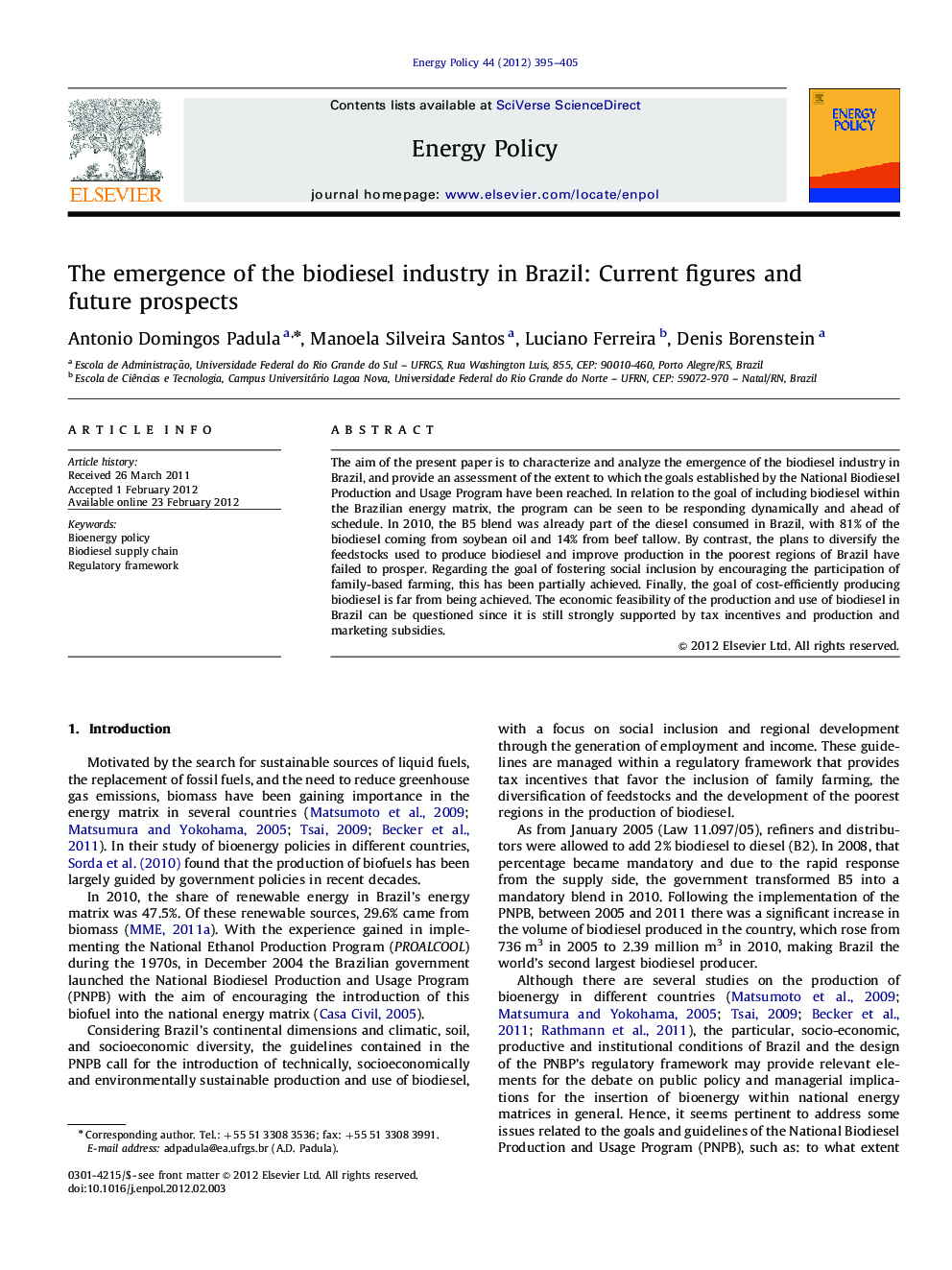| Article ID | Journal | Published Year | Pages | File Type |
|---|---|---|---|---|
| 995724 | Energy Policy | 2012 | 11 Pages |
The aim of the present paper is to characterize and analyze the emergence of the biodiesel industry in Brazil, and provide an assessment of the extent to which the goals established by the National Biodiesel Production and Usage Program have been reached. In relation to the goal of including biodiesel within the Brazilian energy matrix, the program can be seen to be responding dynamically and ahead of schedule. In 2010, the B5 blend was already part of the diesel consumed in Brazil, with 81% of the biodiesel coming from soybean oil and 14% from beef tallow. By contrast, the plans to diversify the feedstocks used to produce biodiesel and improve production in the poorest regions of Brazil have failed to prosper. Regarding the goal of fostering social inclusion by encouraging the participation of family-based farming, this has been partially achieved. Finally, the goal of cost-efficiently producing biodiesel is far from being achieved. The economic feasibility of the production and use of biodiesel in Brazil can be questioned since it is still strongly supported by tax incentives and production and marketing subsidies.
► This paper examines the emergence of the biodiesel industry in Brazil. ► Biodiesel produced from soybean in large plants represents 80% of total production. ► Soybean-based biodiesel costs 30% more than the most economical alternatives. ► The production and trade of biodiesel in Brazil are highly subsidized. ► Feedstock diversification and family farming integration goals have so far failed.
